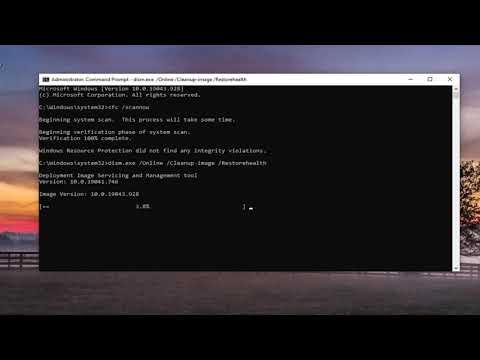I was having a rough day when I stumbled upon a frustrating issue with my Windows 11 system. It all began when I tried to open a document for an important project, only to be met with an error message saying that the file system was corrupted. At first, I thought it was a minor glitch, but as I started encountering similar issues with other files and applications, I realized it was a more serious problem. It was clear that I needed to address common file system errors in Windows 11, and fast.
My first instinct was to search for a solution online. I discovered that file system errors can occur for various reasons, including sudden power failures, improper shutdowns, or even physical damage to the hard drive. It was essential to diagnose and fix these errors to avoid data loss and improve the overall performance of my system. The good news was that Windows 11, as well as Windows 10, provides several built-in tools to help with this issue.
I decided to start with the simplest approach: using the built-in Check Disk utility. This tool scans the file system and attempts to repair any issues it finds. To run Check Disk, I opened Command Prompt with administrative privileges. I did this by right-clicking on the Start menu and selecting “Windows Terminal (Admin)” or “Command Prompt (Admin)” depending on what was available. In the command prompt window, I typed chkdsk C: /f /r and pressed Enter. The C: represents the drive I wanted to check, and the /f parameter tells Check Disk to fix any errors it finds, while /r locates bad sectors and recovers readable information.
I was prompted to schedule the disk check for the next system restart because the drive was in use. I agreed, and when my computer rebooted, Check Disk started scanning the drive. It took a while, but eventually, it completed the process. I hoped this would resolve the errors, but to be thorough, I needed to explore other solutions as well.
Next, I turned to the System File Checker (SFC) tool. This utility is designed to scan and repair corrupted system files. To use SFC, I returned to the Command Prompt with administrative rights and entered the command sfc /scannow. The process took some time, but it was worth the wait. SFC was able to find and replace any corrupted or missing system files, which might have been contributing to the file system errors I was experiencing.
Even after running both Check Disk and SFC, I still wanted to be certain that my system was in top shape. I decided to use the Deployment Imaging Service and Management Tool (DISM). DISM is a powerful utility that can fix issues with the system image, which might affect the performance of SFC. I opened Command Prompt again and typed DISM /Online /Cleanup-Image /RestoreHealth, then pressed Enter. This process also took some time, but it worked in the background to ensure the integrity of my system files.
After running these tools, I noticed a significant improvement in my system’s performance. My files opened without errors, and applications ran smoothly. However, I knew that maintaining a healthy file system required more than just occasional repairs. I took proactive measures to prevent future issues by ensuring that my system was regularly updated with the latest Windows updates. Keeping my drivers up to date also helped, as outdated drivers can sometimes cause file system errors.
Another important step I took was to regularly back up my data. I set up a backup schedule using the built-in Windows Backup tool, which allows me to create system images and file backups automatically. This way, even if I encountered future file system issues, I could restore my system to a previous state without losing valuable data.
In addition to these preventive measures, I made sure to regularly run disk cleanup utilities to remove unnecessary files and free up space on my hard drive. This helped in maintaining optimal performance and reducing the chances of encountering file system errors in the future.
The combination of running Check Disk, SFC, and DISM, along with maintaining regular backups and updates, provided me with a comprehensive approach to fixing and preventing file system errors in Windows 11. It was a bit of a process, but the ultimate goal was to ensure the reliability and stability of my system, which I achieved through these steps.
Overall, while encountering file system errors can be a daunting experience, there are effective tools and practices available to address and prevent these issues. By delving into each solution and applying them diligently, I managed to restore my system’s health and avoid future problems.
